How to fight anxiety with gratitude, and why it works.
A blast of cold air came in with my son as he stomped in the door.
He dumped his backpack and jacket on the floor.
When I reminded him where they belonged, he glared at me and snarled a reply. At my rebuke, he began to sob.
It’s not easy to tuck an angry, sobbing child into your arms, but I did so anyway, making him cry all the harder.
I guided him to the couch. We sat together. He cried, and I summoned up all the patience I could muster while also putting mentally putting together my supper meal plan.
“What’s going on?” I asked, when the sobs had simmered down a bit.
Still sniffling, he choked out his response.
There had been a fight on the playground, and a friendship had been declared to be over. Just like that.
“I’m not your friend anymore” had been shouted, and the harsh edge of the words had dug into his soft heart.
He wasn’t even involved, but simply watching his classmates end their friendship had tipped him into anxiety.
“What if…what if Sam and I stop being friends?” he choked out through fresh sobs.
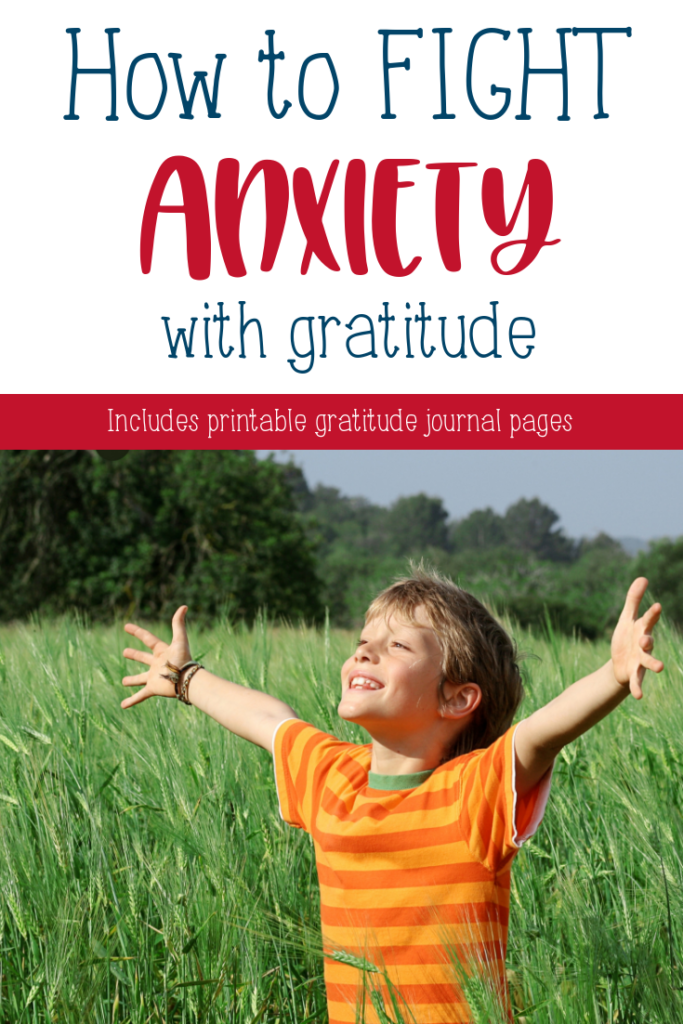
THE CHOICE I HAD TO MAKE
At this moment, I had a choice.
Supper needed to be made but a child’s heart also needed to be tended. I could either dismiss his concerns as overblown, or we could talk more about them.
The problem was that talking about his anxieties had the tendency to make them seem even bigger, and dismissing his concerns would further hurt his anxious 7-year old heart.
Neither was a good option, but I had to start somewhere.
“I know you love your friend. Do you think Sam would do this to you?”
After a moment of thought, he answered. “No.”
That helped, but his thoughts had been whipped into a frenzy by this incident, and one simple question wasn’t going to settle them. It was like a windstorm had indiscriminately picked up all the worries that lay dormant in his brain and they were now swirling around like shrapnel in the updraft of a tornado.
I couldn’t pick out the shrapnel without hurting him. My only option was to help his mental storm to quiet down.
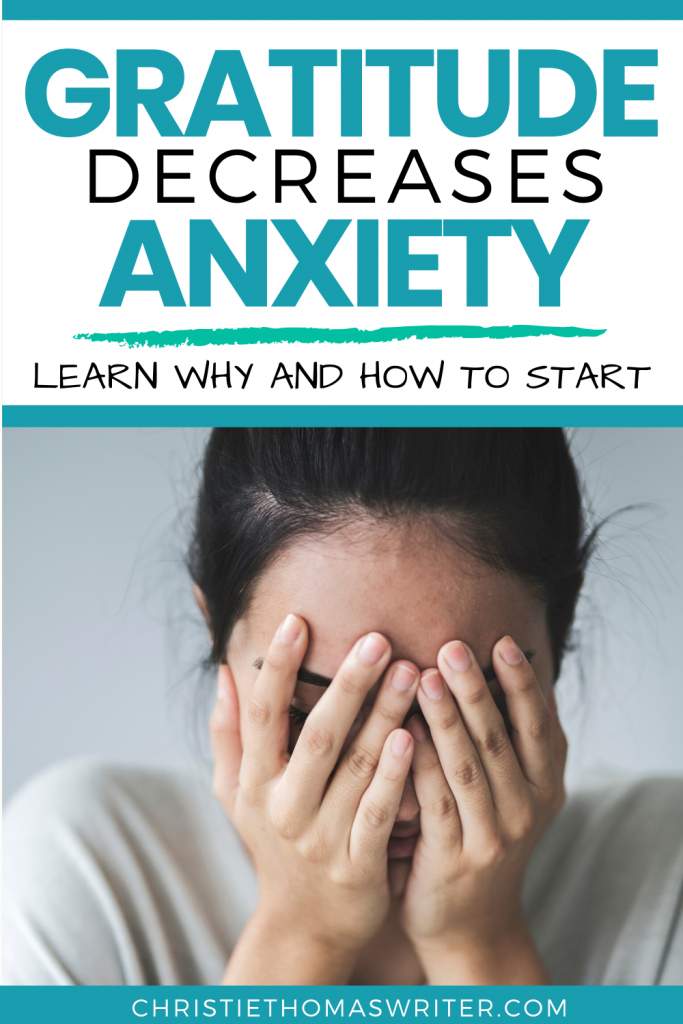
WHAT WE DID
“Ok buddy, we’re going to make a list of things we’re thankful for.” His sniffling continued, but the crying didn’t start up again so I took that as a cue to continue with my experiment.
“Are you thankful for Sam?”
He nodded,
“Are you thankful for me?”
Again, he nodded. Hopefully, that one was easy. But I didn’t want to make the list myself. I wanted him to make the list, so I prodded him a bit.
“What else are you thankful for?”
He hid his face in his arms, shaking his head. I sighed. It’s hard to think of things to be grateful for when worries are flying around your brain like shrapnel. But I wasn’t ready to quit yet.
I continued to offer suggestions, and eventually, he joined in with a few things of his own.
He was grateful for his brothers, for his warm bed, and for farts. In retrospect, I should have started the list with that last one, because once he started giggling, the gratitude list came fast and furious.
WHY IT WORKED
Anxiety is very similar to fear. While fear is a helpful emotion that keeps us from doing dumb things and drives us toward community, anxiety happens when our fears begin to overwhelm us.
When we begin to worry about things that may not happen, we can get stuck in thoughts. Anxious thoughts are difficult to combat because they’re like shrapnel whipping around our heads. One stray worry smacks into another worry, which whips up another one. Before we know it, we’re paralyzed with fear.
The practice of gratitude is one of the best ways to calm the inward storm. Gratitude is a powerful weapon against anxiety. (reference) In essence, we interrupt anxiety with gratitude.
It works by reframing our negative, anxious thoughts and replacing them with positive thoughts.
Gratitude is NOT an avoidance strategy, which is when we simply try to stop thinking about the problem. Rather, “researchers confirm that fear (or that worry that stems from fear) cannot co-exist with feelings of gratitude.” (reference)
The practice of gratitude is an extremely helpful tool to help replace anxious thoughts with positive ones and calm that inward storm. Personally, I almost think it’s as awesome as Jedi mind tricks!
It might be helpful to imagine thoughts going in and out of us as we breathe. Intentional, deep breathing is one of the most common tips given to help with anxiety. Deep breathing activates a part of our nervous system that helps us relax. (reference)
- As we inhale, we can think of one thing that we’re grateful for.
- As we exhale, we can imagine an anxious thought leaving.
Slowly, through deep breathing and replacing negative thoughts with gratitude, that inward storm is left with no shrapnel to whip around. It stills and leaves our hearts at peace.
If you’re a Christian, I have good news for you. In the Bible, we are told exactly how to combat anxiety, and it comes down to the same thing.
“Do not be anxious about anything, but in every situation, by prayer and petition, with thanksgiving, present your requests to God.And the peace of God, which transcends all understanding, will guard your hearts and your minds in Christ Jesus.” Philippians 4:6-7
God doesn’t expect us to simply stop being anxious. That whirlwind won’t stop on its own. But it’s when we present our prayers with thanksgiving that the peace of God will guard our hearts and minds in Christ Jesus.
See? Thousands of years ago, Paul (the guy who wrote Philippians) already knew what researchers are now confirming: gratitude and anxiety can’t coexist in our minds.
>>Related reading: How To Use This One Verse To Help Your Anxious Child
God created our brains, after all, so it only makes sense that the best psychotherapy techniques would coincide with what is taught in the Bible.
HOW TO PRACTICE GRATITUDE
As Ann Voskamp said, “Life-changing gratitude does not fasten to a life unless nailed through with one very specific nail at a time.”
You and I and our children can’t simply make one gratitude list and expect that anxiety will go away. It needs to become a habit. For something to become a habit, it needs to be right in front of your nose.
>>Related reading: This 5-article series on habit-formation
1. Start a gratitude list
Post a piece of paper on the fridge or bulletin board, and add to it together. Add to it at specific times of day (like mealtimes) or when you have specific cues (like when someone says “what if”).
2. Make a seasonal family gratitude list
- At Thanksgiving, we made a communal gratitude list on a pumpkin! My middle son was begging me to bring it back long after the pumpkin had rotted away.
2. We’ve also created communal gratitude lists for Thanksgiving and Christmas on our wall.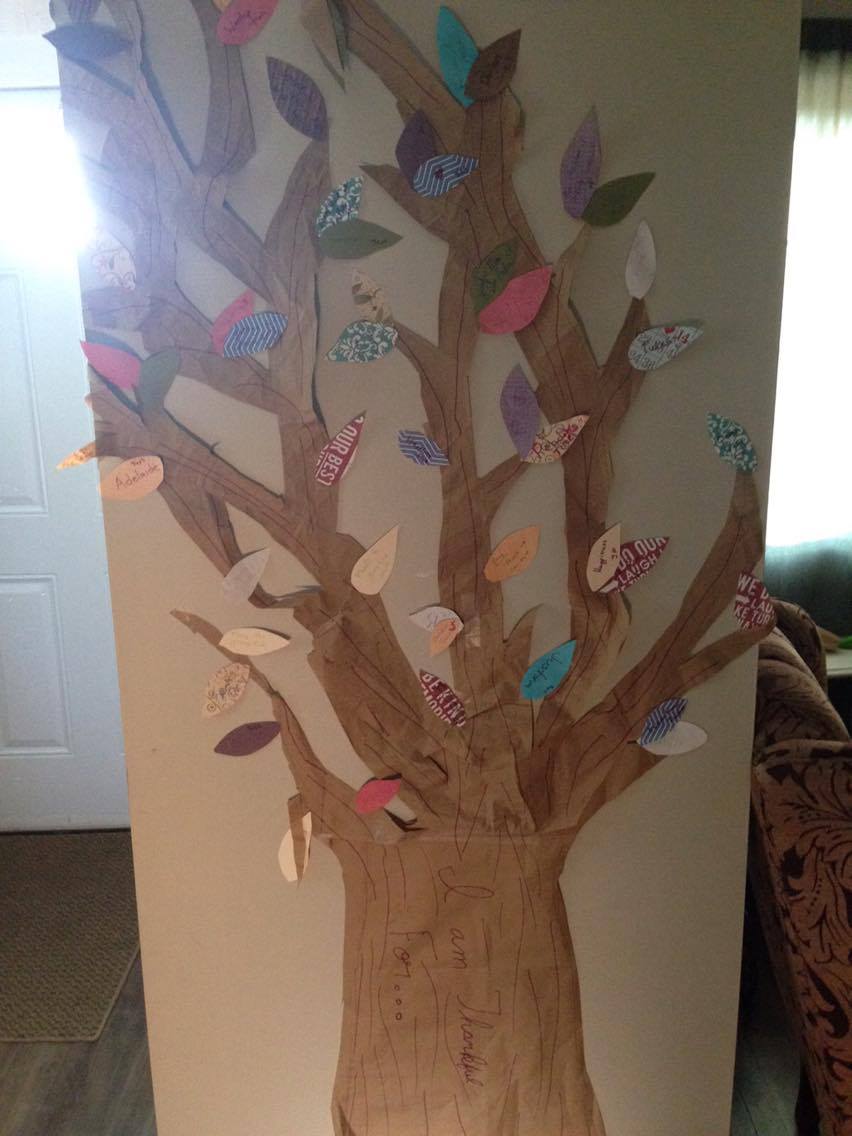
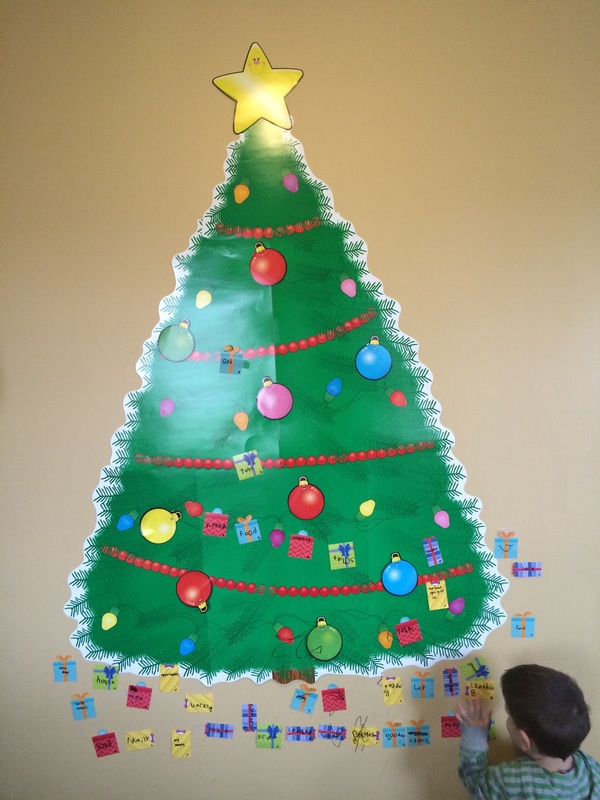
3. Purchase a blank or gratitude journal.
There are a ton of beautiful gratitude journals your child could carry with her (or keep in a safe place). Here are my top suggestions!
BEAT ANXIETY IN KIDS WITH THIS BOOK
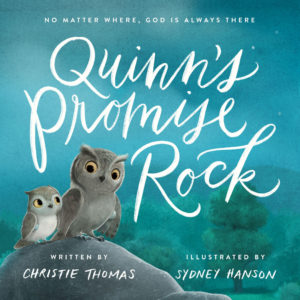
There are days when it seems practically impossible for a child to write down something on a gratitude list. The worries are too big, the problems too insurmountable. He’s still little, after all, and the mountains of life are huge.
Sometimes we need a story to help us move forward.
My book, Quinn’s Promise Rock can help with exactly that. In it, little Quinn the owl shares her anxious thoughts with her dad. He proceeds to take her to a mountain, a cave, and the forest floor in his quest to show her that God is always with her. This reminder brings peace to her and can bring peace to your child’s heart as well.
Learn more about Quinn’s Promise Rock here or download the free teacher/parent guide here.
ONE LIST AT A TIME
That day, my son and I came up with a long list of things we were grateful for. As he joined in the list-making, his shoulders relaxed. His smile came out and joy began to bubble forth.
His anxiety wasn’t permanently solved, but using a gratitude list gave us a paradigm for dealing with his worries.
And as I continue to remind him of the truths he can cling to, those mental storms present themselves less and less frequently.
“As long as thanks is possible, then joy is always possible.”
― Ann Voskamp, One Thousand Gifts: A Dare to Live Fully Right Where You Are

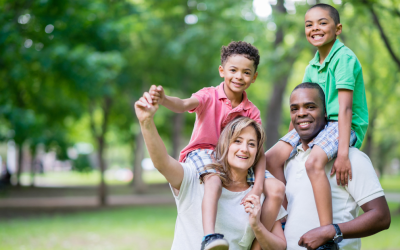
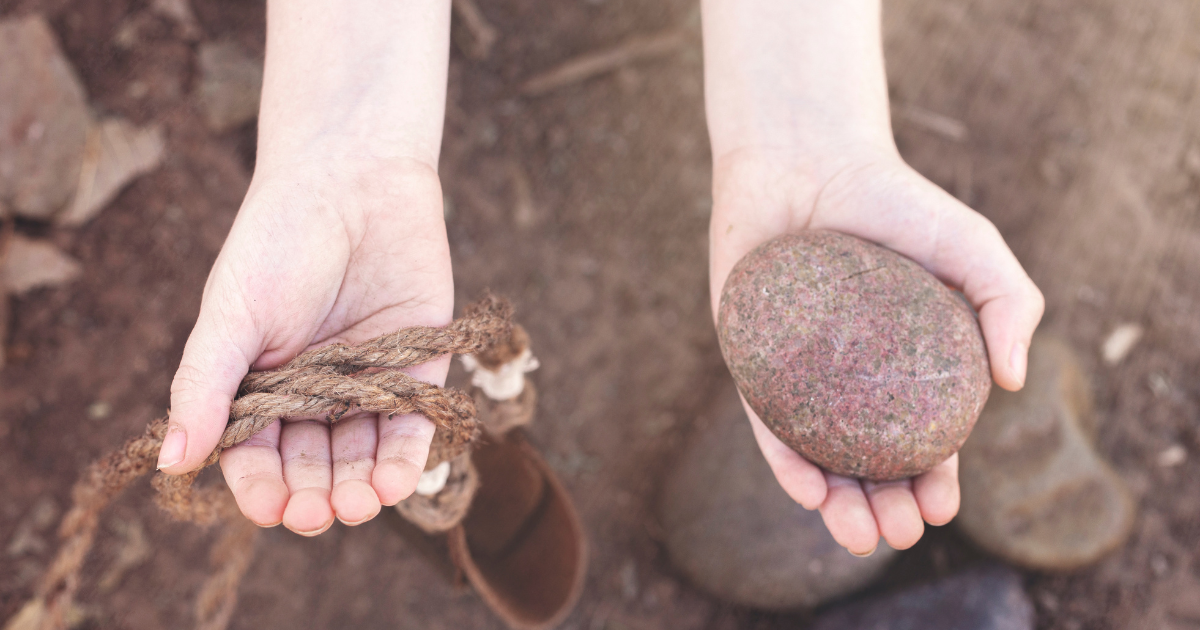
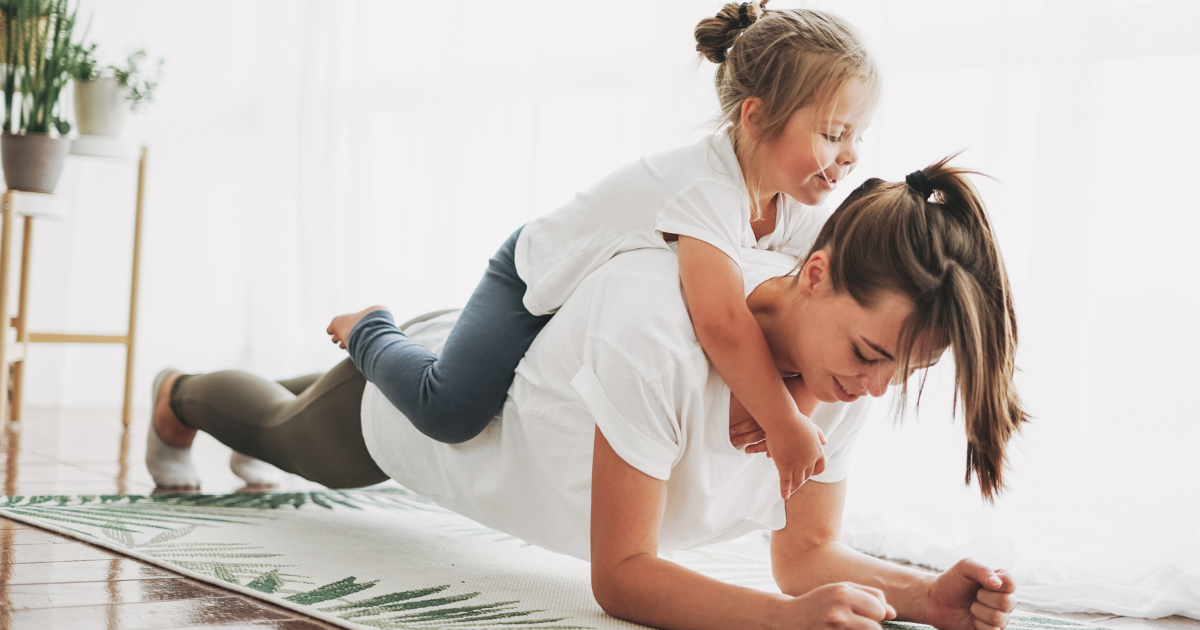
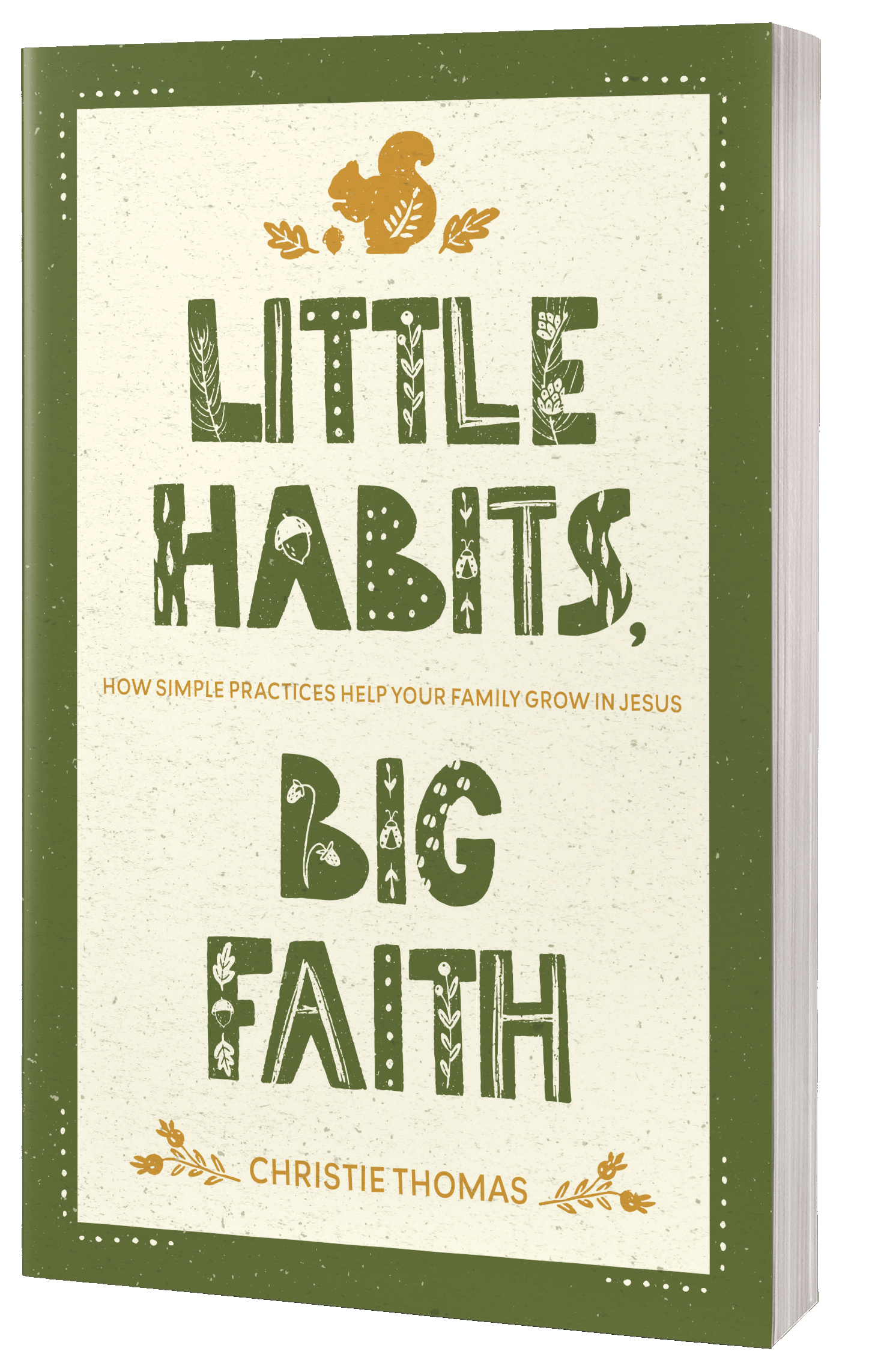
0 Comments
Trackbacks/Pingbacks